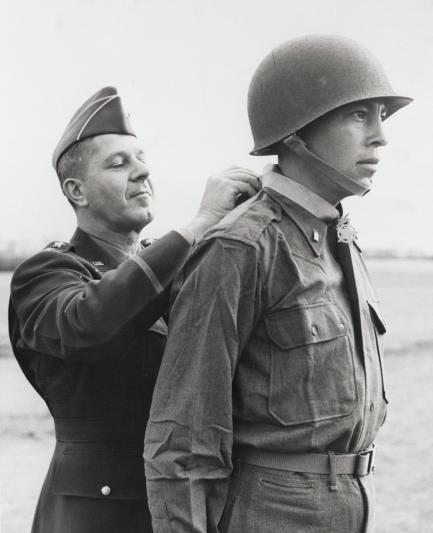(01) National Museum of the American Indian Presents “Patriot Nations: Native Americans in Our Nation’s Armed Forces”
Native Americans have served in every major U.S. military encounter from the Revolutionary War to today’s conflicts in the Middle East in higher numbers per capita than any other ethnic group. “Patriot Nations: Native Americans in Our Nation’s Armed Forces” reveals the remarkable history of Native American veterans through art, photography and essay. The 16-panel exhibition documents 250 years of Native peoples’ contributions in U.S. military history and remains on view from Jan. 21 through January 2018 in the Sealaska Gallery of the Smithsonian’s National Museum of the American Indian in Washington, D.C. The exhibition will also travel throughout the country to:
- Lumbee Tribe of North Carolina, Pembroke, N.C.
April - July 2017 - Mid-America All-Indian Center, Wichita, Kan.
May - September 2017 - Potawatomi Nation Cultural Heritage Center, Shawnee, Okla.
June 2017 - January 2018 - United States Military Academy, West Point, N.Y.
October - November 2017
“Tens of thousands of Native Americans joined the U.S. armed forces during World Wars I and II,” said Herman J. Viola, curator emeritus of the Smithsonian’s National Museum of Natural History and curator of “Patriot Nations.” “Forty-four thousand Native Americans served in World War II; the entire population of Native Americans was less than 350,000 at the time. They are Purple Heart recipients and Bronze Star medal honorees. Many have been recognized with the Congressional Medal of Honor, the United States’ highest military award.”
One of those 44,000 was Lt. Earnest Childers, a member of the Muscogee (Creek) Nation. In September 1943, working under heavy enemy fire near Oliveto, Italy, Childers wiped out two German machine gun nests, killed enemy snipers and captured an artillery observer. In April 1944, he received the Congressional Medal of Honor.
Earlier in American history, William Terrill Bradby and other men from Virginia’s Pamunkey and Mattaponi nations served as river pilots, land guides and spies for the Union Army during the 1862 Peninsular Campaign. They piloted steamers, tugboats, gunboats and torpedo boats during the remainder of the Civil War.
“Patriot Nations” also calls attention to the creation of the National Native American Veterans Memorial on the grounds of the museum on the National Mall. Congress has charged the museum with building the memorial to give “all Americans the opportunity to learn of the proud and courageous tradition of service of Native Americans in the Armed Forces of the United States.” Working together with the National Congress of American Indian, Native American veterans, tribal leaders, historians and cultural experts, the museum will complete the memorial by Veteran’s Day 2020. For more information about the memorial, visit AmericanIndian.si.edu/NNAVM.
“Patriot Nations: Native Americans in Our Nation’s Armed Forces” is made possible through the support of the San Manuel Band of Mission Indians.
About the National Museum of the American Indian
The National Museum of the American Indian is committed to advancing knowledge and understanding of the Native cultures of the Western Hemisphere—past, present and future—through partnership with Native people and others. Located on the National Mall at Fourth Street and Independence Avenue S.W., the museum is open each day from 10 a.m. to 5:30 p.m. (closed Dec. 25). It is accessible from L’Enfant Plaza Metrorail station via the Maryland Avenue/Smithsonian Museums exit. Follow the museum via social media on Facebook, Twitter and Instagram. To learn more about the museum’s mission, visit AmericanIndian.si.edu
# # #
Bethany Bentley
202-633-8293



